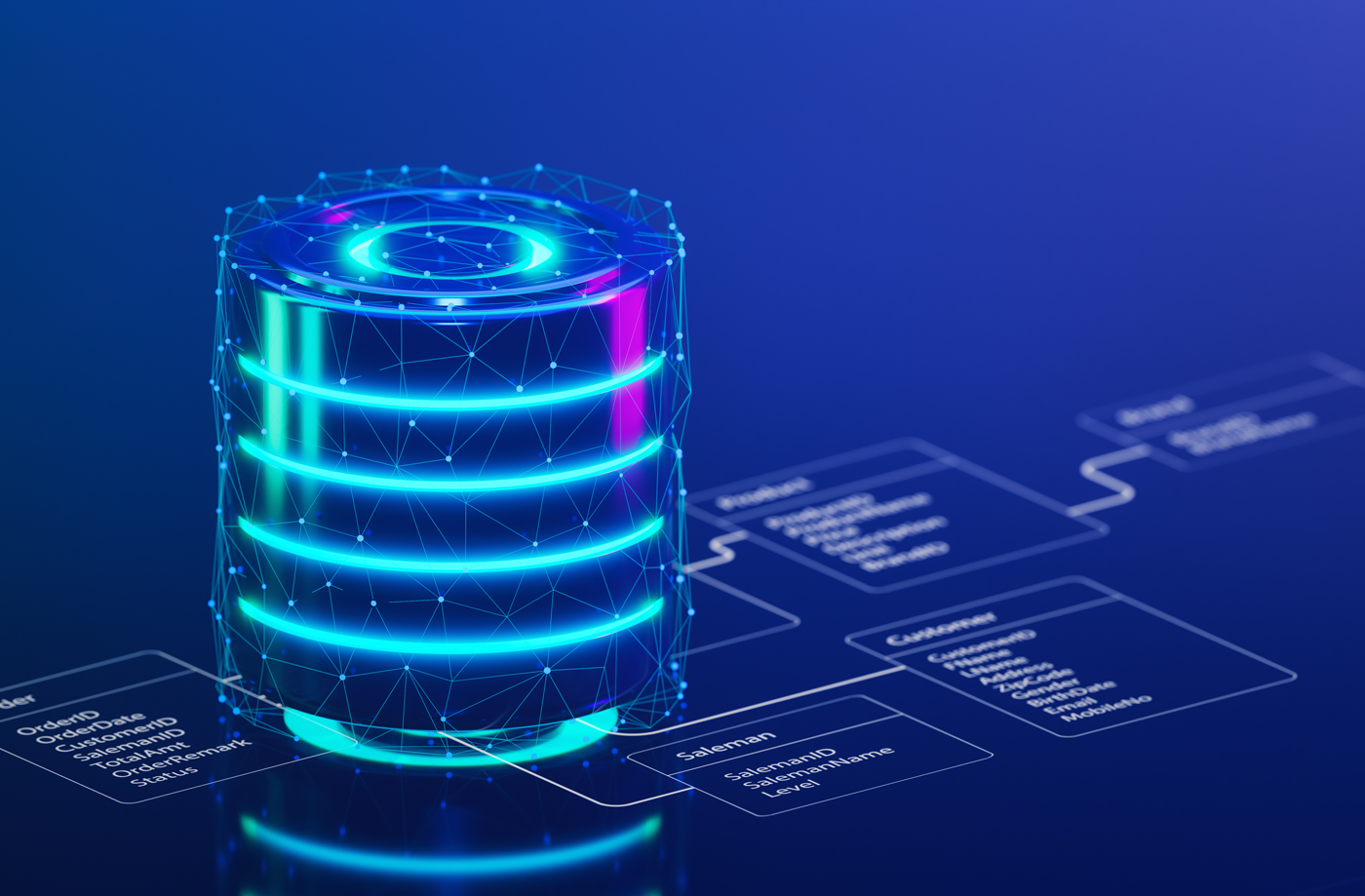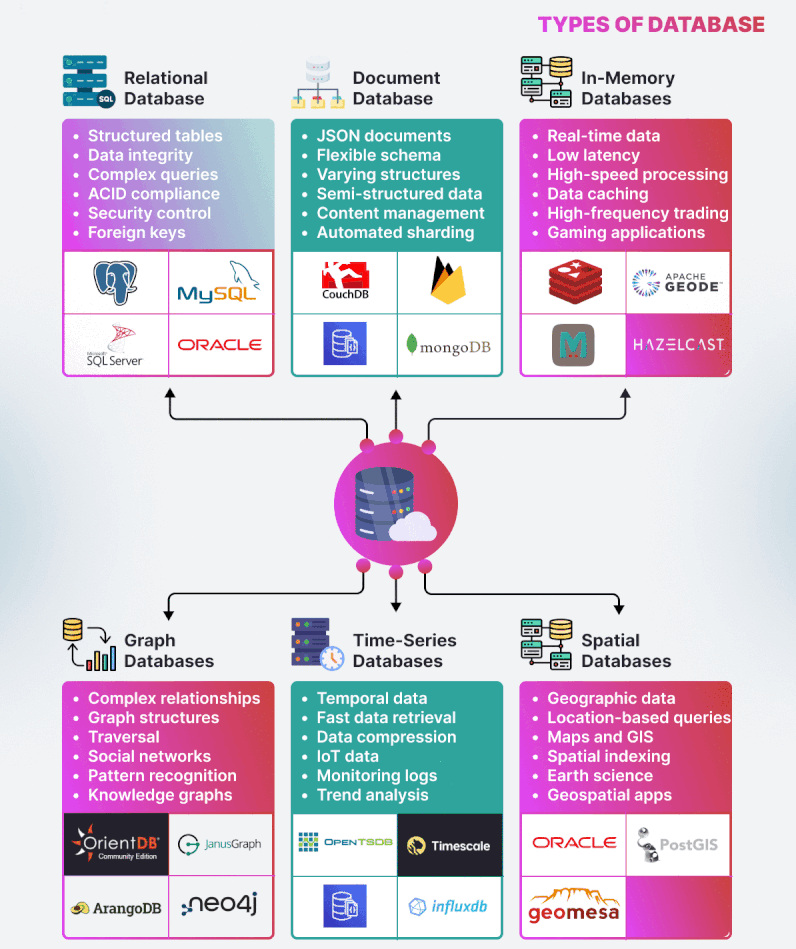

See-Docs & Thenavigo
Database Landscape: A Quick Guide
Navigating the Database Landscape: A Quick Guide!

🔷 Relational Databases: Think SQL, where everything is organized into structured tables. These are your MySQL, Oracle, and SQL Server databases that offer data integrity, complex querying capabilities, and security through ACID compliance and foreign keys.
🔶 Document Databases: Enter the world of JSON documents with MongoDB and CouchDB, known for their flexible schema and seamless handling of varying structures and semi-structured data. They’re stars in content management and excel at automated sharding.
🔴 In-Memory Databases: Speed demons like Redis and Hazelcast live here, providing real-time data handling with low latency, perfect for high-speed processing, data caching, and applications like high-frequency trading or gaming.
🟣 Graph Databases: Complex relationships? No problem for graph databases like Neo4j and ArangoDB, which map out intricate data landscapes, ideal for social networks, pattern recognition, and building knowledge graphs.
🔵 Time-Series Databases: Databases like InfluxDB are tailor-made for temporal data, offering fast data retrieval and efficient storage, which is key for IoT data and monitoring logs.
🟢 Spatial Databases: Lastly, we have spatial databases like PostGIS and Oracle Spatial, designed to handle geographic data and enable location-based queries, essential for maps, GIS, and spatial indexing.
Each type of database serves a unique purpose, ensuring we have the right tools for every data challenge.


See-Docs & Thenavigo
Thenavigo: We share relevant learning content for People.